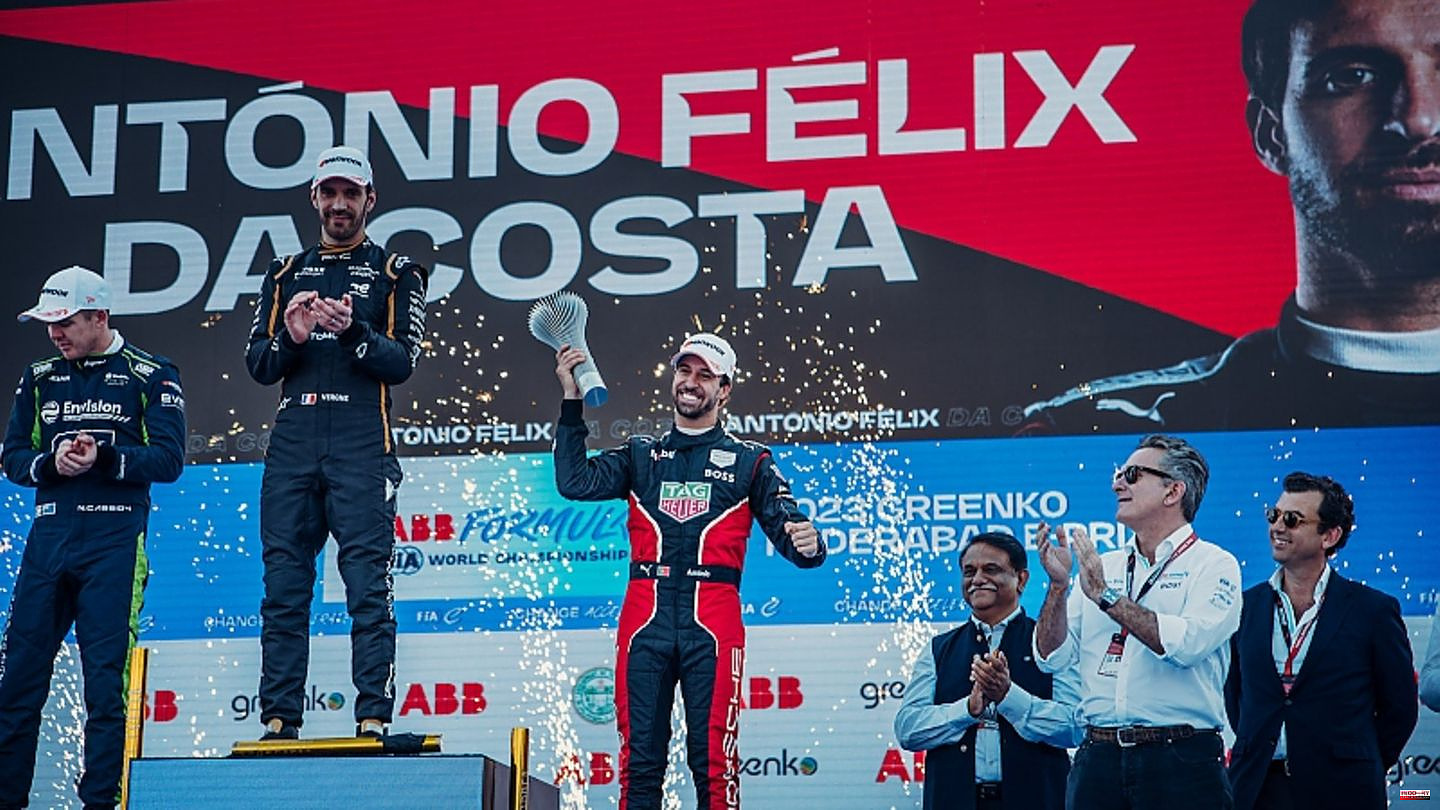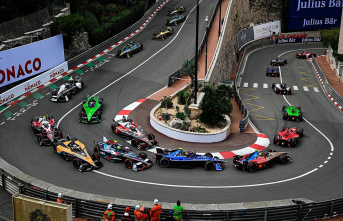Hyderabad is a gigantic city in the heart of India - somewhere between four and a half and seven million inhabitants - nobody here knows that exactly. On the way from the new airport to the never-ending city center, where the first Formula E race on the Indian continent took place, a picture we are familiar with from India: orderly traffic chaos of a special kind. Everyone honks every second, lanes are of interest not even on the edge and then between the small cars there are these thousands of scooters and tuk-tuks. In the distance, smoke is coming from heaps of rubbish and the access roads into the pulsating heart of Hyderabad are dirtier than ever. It's bizarre that the racing circus of the Formula E clean league stops in a city like this. But India has big plans - by 2030, a third of all newly registered vehicles should be electrically powered and nobody really knows how that will happen in the next few years. The international car companies have had their sights firmly set on the Indian subcontinent for years and are expecting a boom – which, however, has not materialized so far. But Toyota, Volkswagen or Stellantis - they all want to bring electromobility to the billionaire state the faster the better.
While Formula E, especially in Europe, is still struggling in its ninth season and a number of car manufacturers have now pulled out of the racing series despite all the electric trends, the situation in India and especially in Hyderabad is very different. Here one could hardly wait for the worldwide electric series to make a stop in the fourth largest city in the country. 25,000 spectators at the first event are always a success. In addition, Maruti, one of the well-known racing teams, is by far the largest car manufacturer in the country. Depending on the region, Maruti-Suzuki has a sales share of 30 to almost 50 percent - an electric race with a strong home player is just right when it comes to tomorrow's mobility. And Maruti is not the only starter in the field that has its roots in India, as Jaguar has been part of the Indian Tata Group for many years. And he's from India too. It is hardly surprising that many Indians are praying for Formula E racing in a new future for motorsport.
The differences between electric races and the environment could hardly be greater. The street course on the banks of Hussein Sagar Lake with all its advertising banners, barriers and fan tents is in stark contrast to neighboring districts such as Kairatabad, Domalguda or Nampally, where things are often poor. The residents often earn only a few rupees a day. Right next to it is the dazzling racing circuit, which has pitched its tents in the middle of India for just under a week. As with the other Formula E races, the audience is right there with the racing action - then they can almost feel the wind of the electric cars whizzing past and the drivers can easily catch them for a selfie - Formula E shows its big brother Formula 1 how motorsport is up close is at the top level.
The racing cars of the third generation are not only visually, but also technologically a big step into the electric future. While the racing cars of the previous season had a standard output of 220 kW / 299 hp and 250 kW / 340 hp were available in the so-called attack mode, the new drives have a maximum output of 350 kW / 476 hp. In racing mode it is still 300 kW / 408 hp. This means that top speeds of up to 320 km/h are possible and so Formula E is entering the speed regions of Formula 1 for the first time, where the vehicles can reach speeds of up to 350 km/h, depending on the race track. For the first time, the models of the new generation have generators on the front and rear axles, which should be particularly noticeable in better recuperation. However, there is currently no real friction brake. The vehicles have become noticeably lighter and thus more agile, in particular due to a smaller battery. While the Generation II racing cars were still on the road with a 52 kWh battery pack, they now only have a slim 38.5 kWh capacity. This means that it is more than ever up to the pilot to reach the finish line both quickly and successfully with the intelligent use of battery power and a high level of braking energy recovery. The front axle can be recuperated with 350 kilowatts and the rear axle with 250 kilowatts.
During the training sessions and the race, the drivers had particular problems with the demanding track with its tight hairpin bends, lots of dust and the high temperatures. 35 degrees in the shade in a racing suit and with the heavy physical strain in the cockpit of the still young third-generation racing cars seem like 15 degrees Celsius more and so even the 45-minute race becomes a high-performance sport. Once again, the event in Hyderabad showed how exciting the racing series itself is - especially with the new electric racers. Jean-Eric Vergne from the Penske DS team was able to fend off the attacks of Nick Cassidy (Envision) and Porsche driver Felix da Costa to the finish and was happy about victory at the first Indian Grand Prix. For Pascal Wehrlein, after a serious training accident in the race and starting twelfth, it was still enough for fourth place. Since Jake Dennis went empty-handed in Hyderabad after a racing accident, the Porsche driver Wehrlein was able to extend his lead in the overall Formula E standings to 18 points. In two weeks, the Formula E racing circuit will move on to Cape Town.








